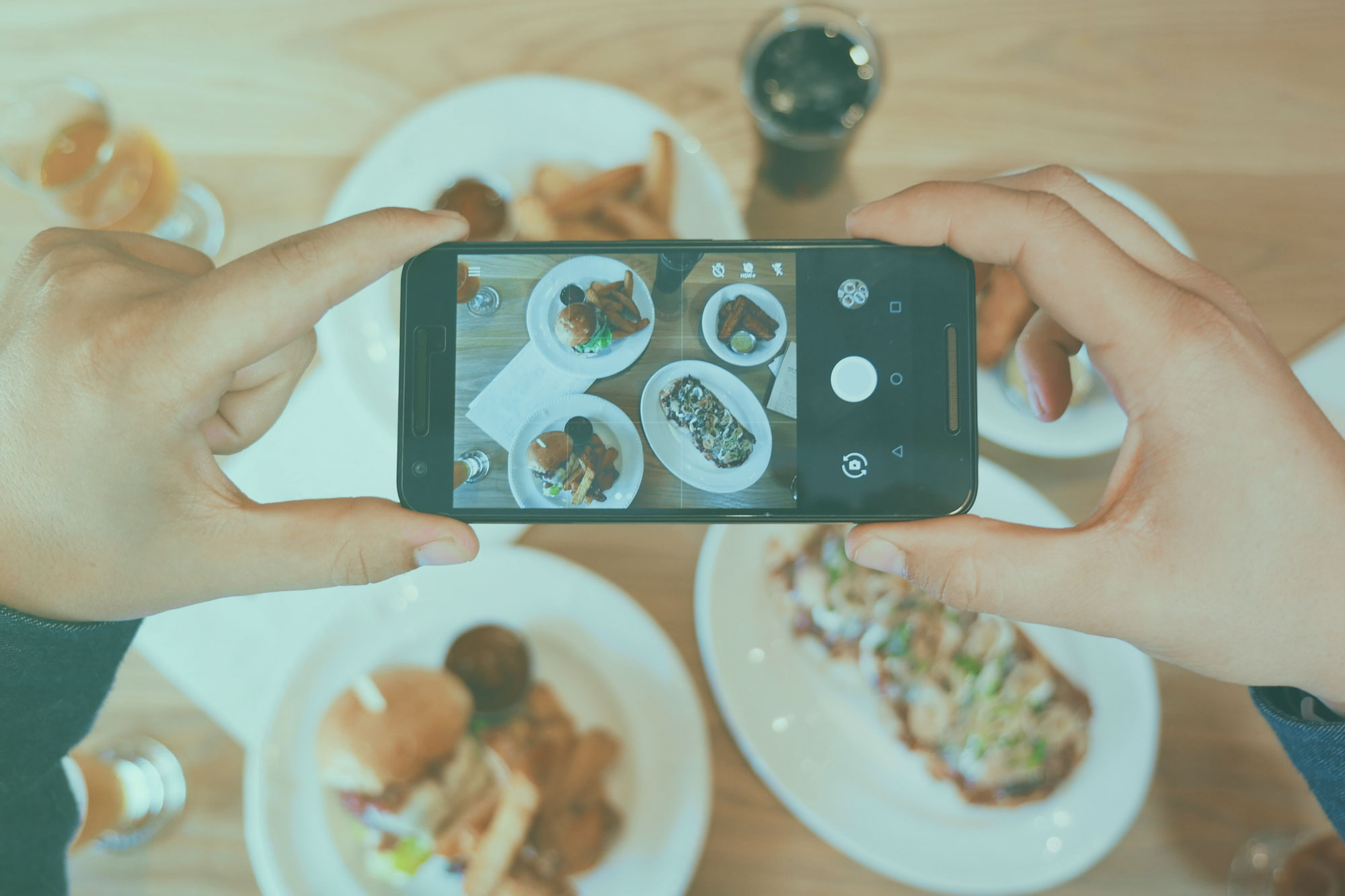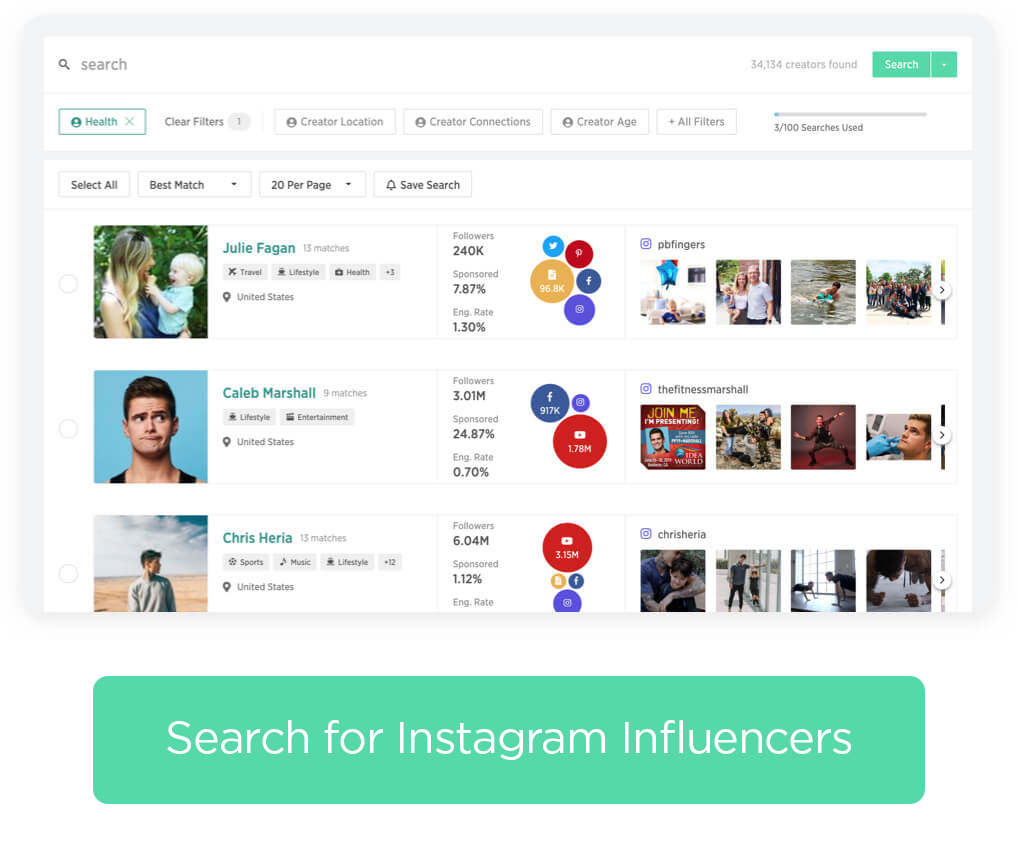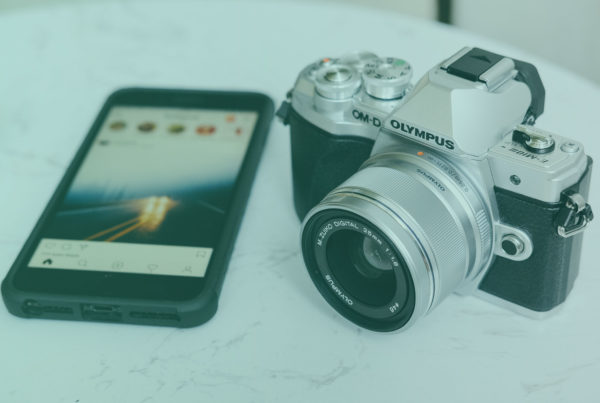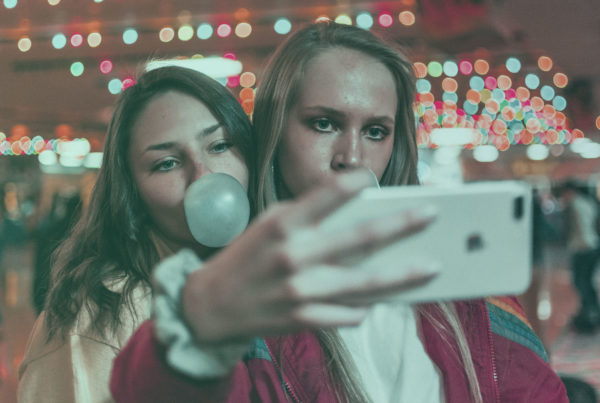Hands down, Instagram is the best platform for influencer marketing. It surpasses all other social media channels in engagement and interaction, and Marketing Hub reported that 79 percent of marketers rank Instagram as the No. 1 choice for influencer partnerships.
Instagram and influencers go hand in hand. That much is clear. What isn’t so clear is how much money those influencers earn.
How much an Instagram influencer makes depends on a variety of factors, so there’s no clear answer here. It’s a huge ballpark, with some new-to-the-scene influencers getting paid in free product and experienced celebrity-level influencers making tens of thousands.
If you’re an Instagram influencer who is working with an agency, then you’ve got a handler who negotiates your rates. But if you’re on your own, then you need to know where to start when it comes to setting prices and even putting together package deals that are attractive to both you and potential brands.
Doing the upfront work of determining what your time and talent is worth will help you pitch yourself to potential partners and negotiate with companies who come knocking on your door.
How to Set Instagram Influencer Prices
Digiday helped establish a baseline when it popularly suggested paying influencers $100 per 10,000 followers for a sponsored Instagram post, and then adjusting the price from there based on several factors.
Here are the most important questions that influencers should ask themselves when setting prices for their work.
What kind of reach do you have?
Are you a macro-influencer with over 250k followers, a middle-influencer with 10k to 250k followers or a micro-influencer with 10k or fewer followers? Answering this question sets that $100 per 10k followers baseline that you can work from, but, more importantly, it helps you gauge your value to brands.

Macro-influencers offer a wider audience but typically lower engagement rates, while micro-influencers offer the opposite: a small but highly engaged audience. Middle-influencers tend to have a best-of-both-worlds appeal.
If you’re a micro-influencer with a niche audience that a brand wants to reach, then you’re more valuable to that brand. Likewise, if a brand is simply looking for wider exposure and recognition, then a macro-influencer is more valuable for that campaign. The more valuable you are, the more you can charge.
How engaged is your audience?
In order to work with you, a company needs to know how many followers you have but also how engaged those followers are with what you post. The higher your engagement rate, the more valuable you are to the company.

An average engagement rate on Instagram for a business account is about 4.7 percent, according to Iconosquare research, but that does vary by industry, with Retail & Fashion, Food & Beverage and Travel & Hospitality leading the pack as the most engaged verticals, according to Mavrck. Brands like to see micro-influencers with engagement rates on the higher side.
What is the scope of work?
Obviously, the more content the company wants, the more you will earn. But it’s also important to consider the expected quality of the work and the timeline you’re given. The higher the desired quality and the quicker the turnaround, the higher the price should be.
What are your production costs?
Think about how much it will cost you to deliver the content. Some influencers pay themselves an hourly rate and take into account anything they need to purchase to complete the job. This includes props and clothing, as well as outsourcing some technical tasks like photo retouching or video production. It may also involve travel expenses.
Are you and your audience a great fit for the brand?
When your personal brand aligns naturally and authentically with another company’s, then your sponsorship is a more valuable asset to that business. Partnerships that feel authentic and natural — rather than forced or contrived — benefit everyone; therefore, the price should reflect that value. Similarly, if your audience fits the company’s target demographic like a glove, then it’s worth more than a followership that isn’t ideal.
What ratio of sponsored vs. organic content are you aiming for?
In order to maintain authenticity as an influencer, you don’t want your Instagram feed to overflow with sponsored content. It’s helpful to set a limit on how many ads you agree to post. If you decide that you’re comfortable with a ratio of 20 percent sponsored posts and 80 percent regular posts, then you may want to charge more than you would if you set a ratio of 50/50, for example.
Does the brand want usage rights or exclusivity?
When a brand wants to reuse or repurpose your Instagram content, that should raise the price. The same goes for an exclusivity clause in the contract that prohibits you from working with competitors for a specified length of time. If that time period exceeds a few weeks, then the price should go up.
Ask What Other Influencers Charge
Have you ever bought a home? When you’re ready to make an offer, your real-estate agent usually looks at comps to help set the price. Comps are other similar homes in the area that have recently sold. Likewise, it helps to know what other Instagram influencers are charging for their services to ensure your prices are competitive yet reasonable.

You may find it helpful to reach out to influencers in your vertical with similar metrics and ask what they charge. In an industry that’s built on community and reciprocity, it shouldn’t take long for your colleagues to help you build some consensus around price.
How to Price Instagram Packages and Bundles
For influencers, maintaining authenticity is supremely important. For that reason, many pros choose to only work on a series of posts — a dedicated campaign — rather than one-offs. This accomplishes several goals:
- It demonstrates a deeper relationship between the influencer and the company, which helps the audience take the endorsement more seriously.
- It requires a larger investment on the influencer’s part, helping them weed out brands they don’t like well enough for such involvement.
- It pays more to the influencer.
- It often represents a bulk discount for the brand.

Many influencers have price sheets that they use to begin negotiations with an interested company. If you’re looking to create one of these, then consider all of the following sponsorship opportunities on Instagram:
- Photo post
- Video post (live or not)
- Photo slideshow
- Video slideshow
- Photo Instagram Story
- Video Instagram Story
- Photo or video Story with swipe-up or poll
- Story Highlight
- Link in bio (or a hashtag or mention)
- Brand takeover
- Giveaway
Start by setting prices for each of these units, and then consider how you might bundle them together. Aiming for a 10 to 15 percent price deduction for bulk content is a good place to start. For example, if you charge $325 per Instagram post, then you can offer a series of three posts for $825 at a $150 discount.
Should Influencers Accept or Reject Alternative Compensation?
There are plenty of companies out there that compensate influencers with free product, discounts or other incentives rather than negotiating a cash payout. Here are a few scenarios in which an influencer may be tempted to take gifts rather than greens.
- Expensive product: A high-dollar product like a designer purse, top-of-the-line laptop or smartphone, mattress, or even luxury travel getaway could be very tempting in lieu of cash.
- Long-term relationship: If a company makes it clear that it can’t pay now but may be able to later, then an influencer who already likes the brand and uses its products may want to get things rolling with freebies in hopes of more down the line.
- Viral or high-level brand: New influencers may agree to product partnerships if they want to connect themselves with a big-name company or the latest and greatest product just to generate buzz. You may value information more than cash if a brand allows you to break insider news in exchange for promotion.
- User-generated content: A brand might ask to use one of your existing Instagram posts in exchange for something free, and many influencers agree because they’re not being asked to do anything more than give consent.





